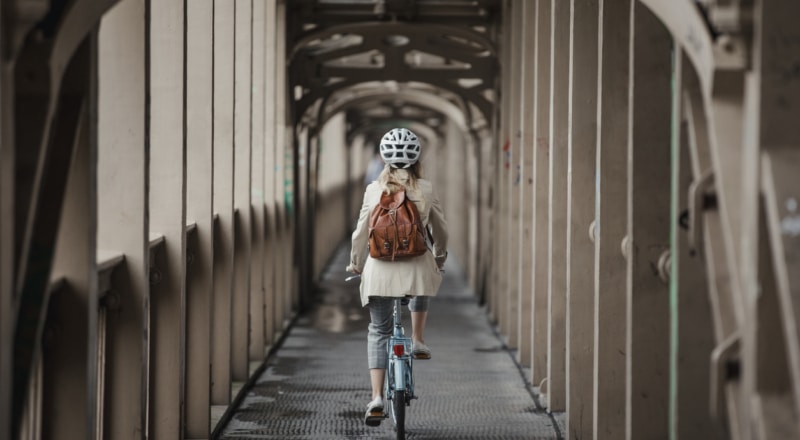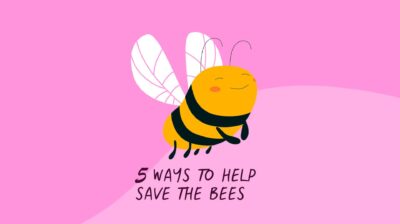How to lower your carbon footprint
There are a lot of steps we can take to reduce our carbon footprint and have a positive impact on the planet

With more and more people beginning to realise the impact that climate change is having on the planet, there have been greater efforts to find ways to reduce our carbon footprint.
Sometimes this means making sacrifices or choosing the less convenient option, but in many ways, making efforts to cut back on your emissions can lead you to make healthier and sometimes more affordable choices.
Reducing your carbon footprint is just one of the things you can do to help tackle climate change and live a more environmentally friendly life. It’s important to also learn more about climate change and reach out to your politicians and ask them to implement the big, collective changes.
What is a carbon footprint?
Climate change is happening as a result of our burning of fossil fuels (like coal, oil and gas), causing greenhouse gases to be released in our atmosphere that trap the sun’s heat and cause the planet’s temperature to rise. Carbon Dioxide (CO2) is one of the most common greenhouse gases that is released from our day to day activities.
As a result, we are increasingly facing rising sea water levels, intense storms and rainfall, flooding, and more.
Your carbon footprint is the total amount of carbon emissions that are released into the atmosphere as a result of your individual activity. It’s also possible to look at the carbon footprint of an organisation, a community, or even a product, like your mobile phone.
How to measure your carbon footprint
The best way to measure your carbon footprint is to use a carbon footprint calculator.
There are a lot of carbon footprint calculators online, but this calculator from WWF, is simple and helpful, although it is UK (and pound sterling) based.
How to reduce your carbon footprint
Once you know how big an impact your lifestyle is having on the planet, the next step is to think about things you can do to reduce that impact.
When thinking about ways to reduce your impact, it’s best to look at different areas of your life in order to work out what you can do. Taking it one area at a time can also help you to feel less overwhelmed by the idea of making changes in your life.
Food
What we eat, how we eat, and where we’re getting our food from can have a big impact on the environment. The next time you’re picking up groceries at the supermarket or ordering food online, take a moment to think about the journey your food went on to reach your plate.
Agriculture is one of biggest contributors to greenhouse gas emissions on the planet, and the energy and fuel that’s needed to package and distribute our food adds to this footprint.
Eat less meat
Keeping livestock on farms is one of the biggest contributors to greenhouse gases. There are approximately 1.5 billion cows on the planet, and each of these cows releases a particularly strong and harmful greenhouse gas called methane when they digest their food. In many parts of the world, trees are cut down to make room for cattle ranches, increasing the carbon footprint of the meat industry even more. By avoiding meat and dairy, you can significantly reduce your carbon footprint.
For some people, the idea of cutting back on meat can seem daunting. Start by trying Meatless Mondays and try to build up from there. Remember, it doesn’t need to be all or nothing – simply avoiding meat one or two days a week can make a big difference. Here are some vegetarian recipes to get you started.
You could also consider going vegetarian or vegan. Read more about achieving a balanced vegetarian or vegan diet.
Try to eat with the seasons and buy local produce
Eating with the seasons can be a great way to not only encourage yourself to buy local produce, but to reduce your carbon footprint at the same time. If we’re eating produce that is out of season, they were probably shipped from countries with different climates. Buying from local farms or going to a farmer’s market is a great way to eat local and with the seasons.
Reduce your food waste
Irish people throw out over one million tonnes of food a year, and 60% of this food waste is avoidable. When you throw away food, it is not only the food that is wasted, but the energy, water and other resources it took to make that food.
If you’re throwing out a lot of food, try buying less and creating a meal plan each week so that you can use up everything you’ve bought. It’s also a good idea to make use of your freezer and make sure you’re storing food properly. You could also start thinking of ways to use your leftovers to avoid throwing them out.
If you do need to throw away food, make sure to put it in the brown bin so that it can be properly composted.
Travel
How we travel can push our carbon footprint up significantly, but there’s also a lot we can do to fix this.
Fly less often
One of the biggest carbon emitters for individuals is flying. If you do a lot of travel by air, then you probably have a big carbon footprint. Sometimes it might be hard to avoid taking a plane somewhere, but if possible, consider taking a train or even a boat instead, or at the very least, fly less often.
Avoid driving on your commute
This is not always easy in Ireland, especially if you live in a rural area. If you can, try not to take the car too often and only choose to drive if you have no other options. Taking public transport is a good alternative, but if you can, try walking or cycling – this is the healthier option too!
If you’re buying a car, think of buying an electric. If there are no electric charging points in your area, lobby your local government for more points.
Saving energy
The way we use energy at home makes a big contribution towards our carbon footprint, and a lot of the energy we’re consuming is happening when we’re not even doing anything. Small steps like using energy efficient light bulbs and switching the lights off when you don’t need them can make a difference.
Unplug your appliances
Even though you’re not using it, simply having an appliance plugged in is consuming energy. Although it may not seem like that big a deal if your TV or microwave is using a small amount of energy during the day, when you consider all of the appliances you have plugged in all year long, it can add up to a lot. Try to unplug appliances after using them, especially overnight or if you’re going away for a few days.
Fill your dishwasher
Try to avoid running the dishwasher too often in order to save on energy. Instead, only run the dishwasher once it’s completely full. If your dishwasher has an energy efficiency setting, use that whenever you are running it.
Laundry
As with the dishwasher, try to only run your washing machine when you have a full load. Doing a half load wastes both water and energy, and a lot of items that we send to the washing machine could actually be washed by hand, especially if you just want to freshen it up. Make use of energy efficiency settings on your washing machine.
It’s also best to avoid using a dryer and always hang-dry your laundry. This helps to save energy and money, since you won’t be paying for the energy needed to run the dryer. If you are using a dryer, make sure to clean the lint filter after each use and throw it in the bin – lint cannot be recycled or composted, because a lot of our clothing is made using plastic fibres.
Use less water
If you’re in the habit of taking long showers or leaving the tap running when you’re not actually at the sink, it might be a good idea to try and change some of these habits. When you’re brushing your teeth, turn off the tap when you don’t need it. Try and take shorter showers, and switch off the water when you’re doing things like using shower gel or shampooing or conditioning, that way you’ll only be using the water you need.
Your clothes and the environment
Our clothes can have a major impact on the environment, and the process of making them can result in a huge amount of pollution and carbon emissions. ‘Fast fashion’, which includes clothes from stores like Penneys or H&M, is one of the biggest culprits. When clothing lines are constantly changing, and we’re constantly buying, our carbon footprint gets bigger and bigger.
The best thing you can do is buy clothes and other items less often. If you have an event coming up and you’re tempted to buy something new to wear, consider borrowing from a friend or someone you live with instead, especially if there’s a chance you’re only going to wear the outfit once.
Buying second hand
If you do want to buy something, try to get it second hand first by looking in charity shops or searching online. If you want it, there’s a good chance someone else is trying to sell it. There are also more and more clothing swaps appearing around the country, where you bring clothes you no longer want to wear and swap them with clothes that someone else has brought. Looking out for events like these and always trying to go second hand first is a great way to save money and have a positive impact on the environment at the same time. Learn more about sustainable fashion.
It might seem like a challenge to reduce your impact and lower your carbon footprint, but if you take it one step at a time and continue to make positive changes, you can make a difference.
Demanding meaningful change
While individual efforts to cut back on emissions can make a difference, it is important to remember that you are not personally responsible for reversing climate change and its impacts. Decisions made by governments and industry leaders have led us to the situation we are currently in. If we want to limit global warming, we need significant and meaningful changes to be made to laws and business practices worldwide. Governments have the power to bring in laws that require companies and communities to help rather than harm our planet. If you are worried about climate change, you can lobby your politicians and demand that they take action on this issue.
Learning about climate change can be very overwhelming. If you are worried about climate change, it is important to know that there is support available. Find out more about what to do if you’re experiencing climate anxiety.






